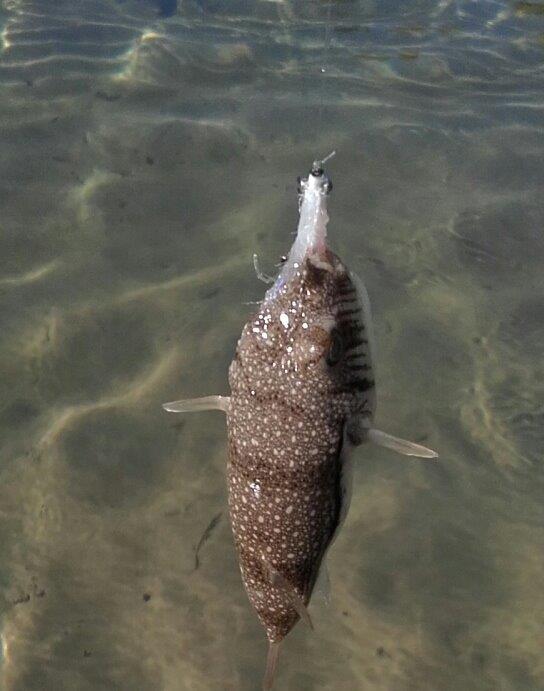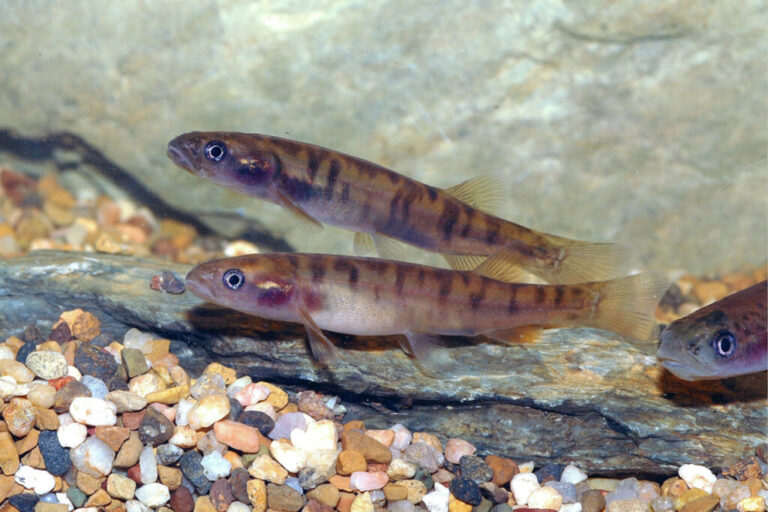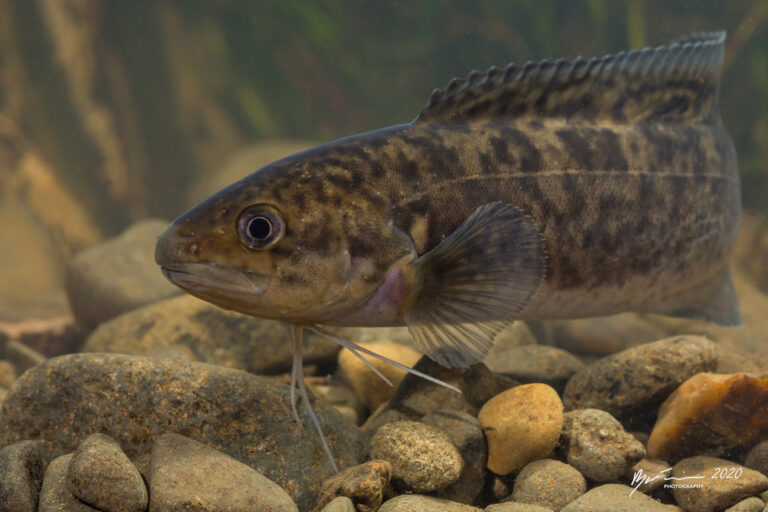
The common toadfish (Tetractenos hamiltoni), also known as the toadie, toadfish or toado is found in shallow coastal waters and estuaries along Australia’s eastern coast, from northern Queensland to Flinders Island. It is a schooling species that is often seen buried in sand with only the eyes exposed.
The fish is sandy to whitish in colour, with small brown spots over most of the back and upper sides, and brown bars and blotches beneath. It has a maximum length of 14 cm. The colour of the common toadfish varies according to where it frequents; those taken over eel-grass are brownish green with five very dark crossbands. Those over a sandy bottom are much paler with the speckled cross bands less distinct. The skin of the Common toadfish is covered with small prickles.
The species has small gill slits located just in front of the pectoral fin bases and a distinct skin fold running along the lower sides. Its teeth are fused and form a beak-like structure with a median groove. It is able to vary the amount of pigment in its eye, which becomes yellow in colour under bright light.
Apart from the stonefish, it is one of the few fish that allow themselves to be stranded on the intertidal flats on a falling tide, using the pectoral fins to winnow out a shallow depression where it lies motionless awaiting the returning tide.
As with other fish of this family, the flesh is poisonous, due to tetrodotoxin, and eating the fish can have fatal consequences.
Toadies can be successfully caught on fly as attested by the capture and release of several by two of our members during an excursion to Hat Head.
Our experienced toady specialists advise that they are not a great fighting fish and any rod from a 1wt to a 14wt is capable of handling an average size toadfish. The reel does not require an oversize drag or any great length of backing. Small clousers and Crazy Charlies have proven successful.





